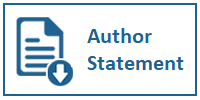The Potential of "GENIUS”: Deep Learning Integrated Application to Fight Obesity
DOI:
https://doi.org/10.31937/ijnmt.v11i1.3471Abstract
Lifestyle changes regarding food consumption and sedentary lifestyle has led to increase prevalence of obesity worldwide, including in Indonesia. Obesity as a risk factor for various diseases has become an urgent issue considering that currently available therapies have not shown optimal results in overcoming this problem. The "GENIUS" application is present as a body types analysis system and program recommendations for obesity therapy. The purpose of writing this paper is to find out the potential, construction mechanism, and operating mechanism of the application. The methodology of writing this paper is literature review, based on secondary data from databases such as Google Scholar, PubMed, and ScienceDirect. The construction mechanism of the application includes process of collecting dataset, creating the application and deep learning system, and launching the application. The technology utilized in the application involves image processing deep learning and recurrent neural networks, enabling it to generate outputs suit to each individual's needs and provide appropriate program recommendations. Through the "GENIUS" application, users can also consult with medical professionals, receive recommendations, and record clinical data progress in a single digital application accessible via smartphones. The application also provides an interesting sub-feature in the form of reward points given to users for using the application's features. The implementation of the application involves the quadruple helix model. The benefits of the application encompass the fields of health and knowledge, aiming to prevent obesity in order to foster an intelligent generation and achieve a healthy Indonesia.
Downloads
Additional Files
Published
How to Cite
Issue
Section
License
Authors retain copyright and grant the journal right of first publication with the work simultaneously licensed under a Creative Commons Attribution-ShareAlike International License (CC-BY-SA 4.0) that allows others to share the work with an acknowledgement of the work's authorship and initial publication in this journal.
Authors are able to enter into separate, additional contractual arrangements for the non-exclusive distribution of the journal's published version of the work (e.g., post it to an institutional repository or publish it in a book), with an acknowledgement of its initial publication in this journal.
Copyright without Restrictions
The journal allows the author(s) to hold the copyright without restrictions and will retain publishing rights without restrictions.
The submitted papers are assumed to contain no proprietary material unprotected by patent or patent application; responsibility for technical content and for protection of proprietary material rests solely with the author(s) and their organizations and is not the responsibility of the IJNMT or its Editorial Staff. The main (first/corresponding) author is responsible for ensuring that the article has been seen and approved by all the other authors. It is the responsibility of the author to obtain all necessary copyright release permissions for the use of any copyrighted materials in the manuscript prior to the submission.















